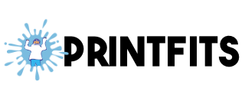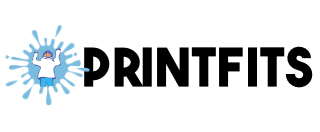Custom printing in 2025 balances fresh tech, short print runs, and cleaner production. Screen printing still rules on volume, but direct to garment now rivals it for color range, direct to film fills the gap on dark synthetics, and embroidery remains the long-life champ. Water based inks keep growing, blank makers lean on recycled fibers, and compostable mailers move from fringe to normal. Numbers back the shift: digital textile printing tops twelve percent annual growth, and water based inks rise four percent each year. Those facts set the stage for publishers, merch brands, and stores such as Spellbound Shelf to plan the next print drop.
Why Custom Printing Is Hot in 2025
Digital textile output is worth 5.8 billion dollars in 2024 and climbs at a projected twelve point seven percent compound rate through 2030. Fast lead times suit e-commerce and niche fandom lines. Screen shops answer with water based ink that cuts solvent use while holding sharp detail. Brands now blend organic cotton, recycled polyester, and modal to meet shopper demands for lower impact blanks.
Environmental rules push printers as well. Markets in North America continue to favor water focus additives over plastisol, helped by regional regulations that limit volatile organic compounds. Meanwhile, small businesses use custom print runs to hand out edge cards, event passes, and merch bundles that feel personal.
Four Popular Printing Methods Reviewed
Screen Printing
Description
Ink is pushed through a mesh stencil onto fabric. Each color needs its own mesh. Water based chemistry now rivals plastisol for opacity.
Pros
-
Bright color on light and dark cotton
-
Low cost at one hundred or more pieces
-
Wash resilience proven in durability tests
Cons
-
One screen per color raises setup cost on small runs
-
Complex art may need color separation skills
Dealbreaker
Need fewer than twenty units and every color has gradients. Under those limits the method loses time and money.
What Makes It Best
For large fan event shirts, screen printing still gives the lowest cost per piece and stands up to heavy wash cycles.
Direct to Garment (DTG)
A large inkjet places water based pigment directly on fabric. Pretreat fluid helps ink bond.
Pros
-
No minimums
-
Rich detail and photo color gamut
-
Smooth feel on ring spun cotton
Cons
-
Works best on cotton blends, less on heavy poly
-
Print sits slightly above fabric, so lint traps ink over time
Dealbreaker
If the shirt is fifty percent or more polyester and the art covers a full chest, expect weak wash life.
What Makes It Best
Short, on demand runs with multicolor art need no setup and ship same or next day.
Direct to Film (DTF)
Description
Printers lay CMYK plus white ink on a transfer film, add adhesive powder, then press the film onto garment. Growth spikes as tech enables sharper dots in 2025.
Pros
-
Works on cotton, blends, nylon, and spandex
-
Crisp color on dark fabric without pretreat
-
Transfers store for months
Cons
-
Hand feel slightly rubbery
-
Requires heat press and fume capture
Dealbreaker
When the design calls for vintage wash softness, DTF texture feels off.
What Makes It Best
Versatile stock lets printers cover leggings, jackets, and bags in one workflow.
Embroidery
Description
Digitized thread paths stitch directly into cloth.
Pros
- Thread outlives the garment in many cases
-
Adds depth and texture
-
No ink, so zero cracking
Cons
-
Limited fine detail
-
Cost climbs with large stitch count
Dealbreaker
A photo style design with shading will not translate.
What Makes It Best
For logos on caps or left chest placements the method looks premium and stays bright after many washes.
Choosing the Right Method for Book Inspired Merch
Match the art, fabric, and order size to the method. Screen fits a large group preorder. DTG helps test fresh art before full release. DTF handles polyester active wear that mirrors the lighter gear readers take to the gym. Embroidery nails small crests on beanies that pair with fantasy jackets.
Care Tips for Printed Apparel
-
Turn inside out and wash cold.
-
Skip the dryer or use low heat.
-
Lay flat caps and stitched items to dry.
These steps keep fiber strain low and ink bonds tight, the same advice confirmed by durability research across print processes.
Sustainable Moves in Custom Printing
Water based ink volume climbs four percent yearly through 2025, with North America leading demand. Compostable mailers made from cornstarch now cost under fifty cents each at scale, easing the switch for small brands. Digital workflows cut setup waste, and blank makers process recycled bottle fiber into soft shirts that halve energy use compared with virgin poly.
Those shifts let story driven labels anchor new drops in cleaner practice and durable craft. Printed right, each tee or tote brings fiction to daily life without extra footprint.


